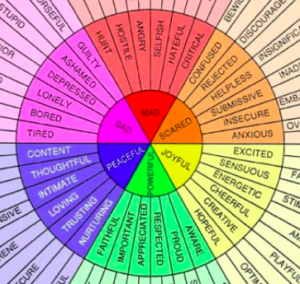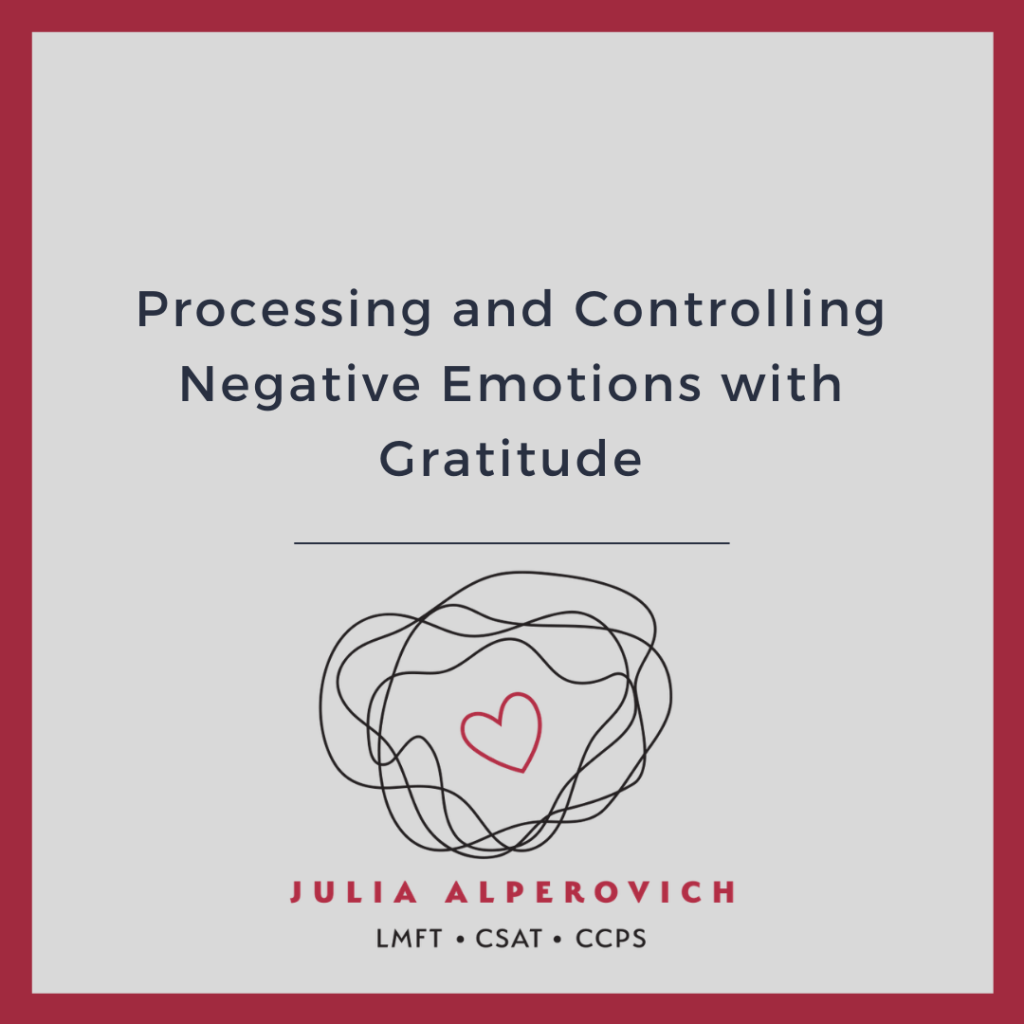In light of the recent events and tragedies unfolding across the United States, I would like to pause a moment and honor each life that has been lost to racial discrimination, police brutality and COVID-19 . Second, I am offering a quick guide to Learning from Negative Emotions, processing, and controlling negative emotions so you can move more gently through these confusing times.
Whether you find this piece as a young adult, a mature adult, or someone late in life, there are always ways to learn from negative emotions and reframe them to make our lives more manageable. The impact negative emotions have on our physiology are real and can make life feel overwhelming, let’s lessen these effects and practice gratitude instead.
6 Negative Emotions and How to Transform them into Gratitude
Anger: Anger results from feeling pain or fear, or a combination of those two emotions.
Thank your anger: Did you know anger only turns into aggression 1/10 times? Most times it leads to seeking mediation, restitution or reassurance. Be grateful for this conclusion because understanding anger and seeking resolution whether from a therapist or another third party increases your communication skills.
Annoyance: Annoyance is a weaker form of anger, but it is important to recognize, as it can turn into overt anger and result in aggression.
Thank your Annoyance: If you recognize you are annoyed, you may also be triggered by trauma from your past. With all of these emotions, as soon as you name them, you can really see how grateful you can be to not live in them but to move through them and understand where they live. Knowing where they stem from is something to be very grateful for.
Fear: Fear is a core emotion and many complex emotions arise from it. At its’ root, it is based in self preservation. It is a response evolved to protect us from dangerous situations, but it also can be inhibiting if it is misinterpreted.
Thank your Fear: Be very very grateful for fear. However, try some exercises like meditation to understand actual fear responses and separate them from perceived threats, ALA Amy Cooper and the Big Karen energy.
Anxiety: Anxiety originally is meant to be an indicator of danger, but we can experience anxiety when we perceive a threat that does not exist or when we are reminded of a threat we experienced in our past. It can lead to activities or physiological states that are unhealthy.
Thank your Anxiety: Frequent, persistent, anxiety is debilitating. But it also can be managed and redirected into action towards accomplishing goals, if recognized and moved through mindfully. Anxiety, like fear, evolved quite naturally out of a state of survival. Trauma can produce anxiety if untreated, if you experience anxiety that is trauma related and can sense this coming on, talk to a friend, a therapist or someone else to help ease this emotion. But recognize your anxiety as a warning system that is prompting you to slow down and assess your situation. We owe our safety and our ability to recognize when we need to set boundaries to that warning system. And for that, we should be grateful.
Sadness: Sadness can result from grief, disappointment in ourselves, or disappointment in circumstances unrelated to ourselves.
Thank your sadness: Sadness offers clues to stimuli in your immediate environment that are displeasing to you. Take a moment to be in your sadness, thank it for allowing you to acknowledge and honor losses and to identify the people, places or things that do not bring you joy. After you have taking this moment, find an immediate thing in your environment that brings you joy. It could be a dog, a cat, or a walk outside and a flower.
Despair, Jealousy, and Guilt: Despair arises when you repeatedly attempt to achieve a goal and fail. Jealousy arises from fear, and guilt/shame arise from pain and fear.
Thank these emotions too! Each of these emotions are rooted in other emotions, we have included a wheel here for your reference, but they are very useful in identifying trauma and being able to make different decisions based on identifying your emotions and being able to understand or label where the emotions are coming from.

This is in no way suggesting that your emotions are trivial or that you should be grateful for an anxiety disorder, feeling gratitude is only one way of moving through emotions. I offer therapy that provides many different exercises and techniques for easing yourself out of negative emotions and into a more calm existence, regardless of events beyond your control.


